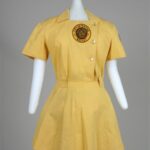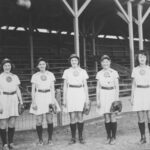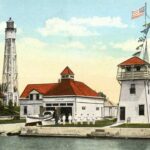As the United States entered World War II in 1941, the war’s impact on American culture was felt far and wide. Aside from the obvious strains on economic and industrial production, American recreation was temporarily put on hold. This included much of Major League Baseball (MLB) and its minor-league affiliates, as many of the players across the nation answered the call to arms. In an effort to preserve baseball in America and inspired by the “Rosie-the-Riveters” across the nation, Philip Wrigley of the Chicago Cubs formed the All-American Girls Professional Baseball League (AAGPBL), a professional women’s baseball league centered in the Midwest that ran from 1943-1954. Wisconsin was home to three AAGPBL teams, including the Racine Belles — a team you might know from the 1992 film “A League of Their Own”.[i]
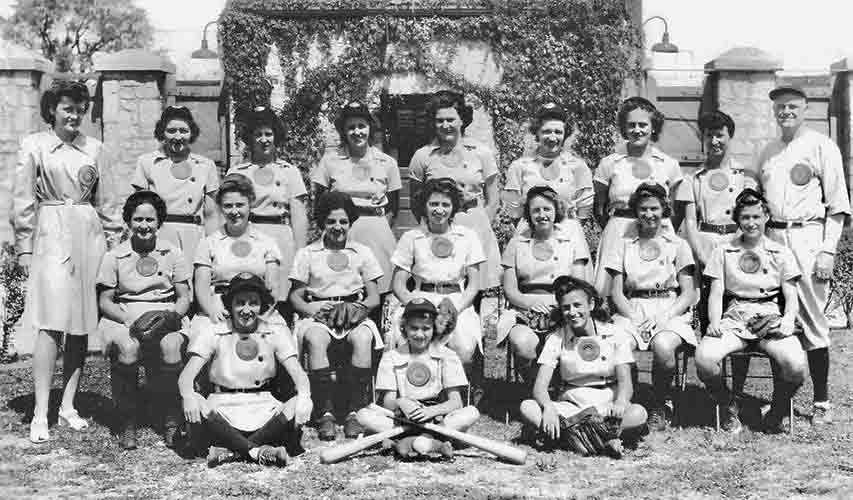
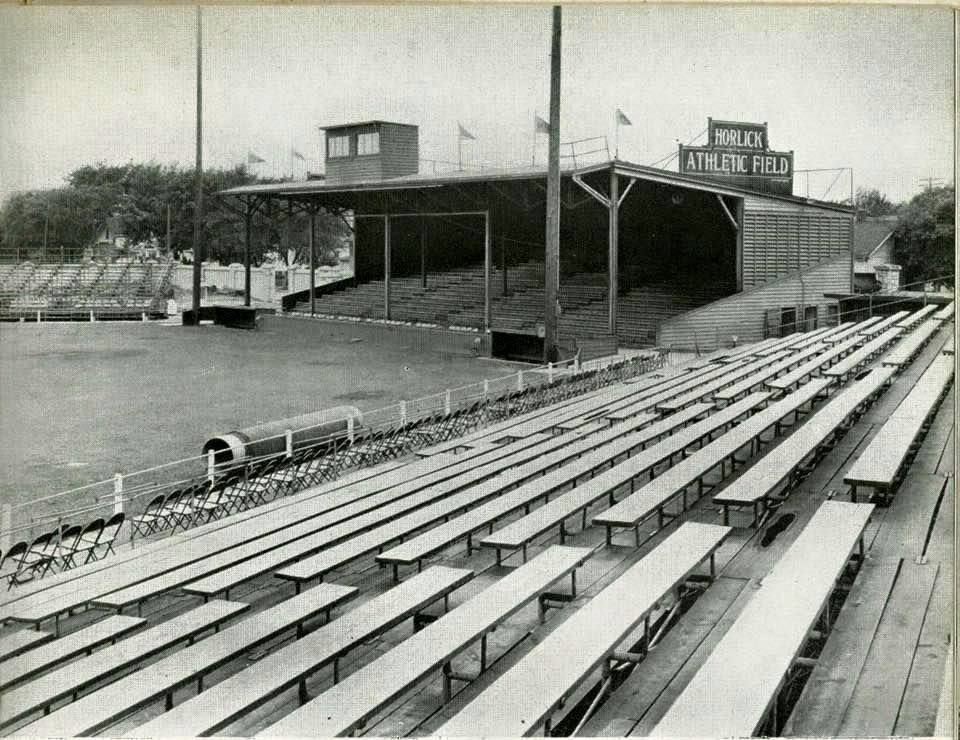
The Belles played in Racine from 1943-1950, winning the inaugural season’s league championship and setting unbroken league records in the process. The team was an instant hit in the city, consistently drawing crowds of over 2,000 spectators, and sometimes even over 4,000, to the city’s small ballpark, Horlick Field, named after the historic Horlick family from Racine and their malt products.
The Belles played a similar schedule to the MLB, with their season lasting from late spring to early autumn, weekdays and weekends alike. On weekends, the Belles would play two, or sometimes even three games a day against their opponents. The AAGPBL proved incredibly popular for wartime America, with the league as a whole drawing over 450,000 spectators a season.[ii]
The Belles were more than a local ballclub; they were a bona fide professional baseball team with players coming from across the nation and even other countries. In fact, in their 1943 championship season, just three Belles of the 21-person roster were from the Racine area. An excerpt from the AAGPBL’s song shows the league’s ethnic diversity, “For we’re the members of the All-American League, we come from cities near and far. We’ve got Canadians, Irishmen and Swedes, we’re all for one, we’re one for all, we’re all Americans.” Notably, however, the Racine Belles, as well as the AAGPBL, was an all-white league, a result of the persistent racism and segregation in Wisconsin and the Midwest during the 20th-century.[iii]
Though many of the Belles came from far away, the team was still strongly connected to the Racine community. The team was entirely funded by local businesses, with some 30 Racine companies underwriting the team for $22,500 ($337,000 2020 USD) in the inaugural season. Business owners were unsure if their investment would be returned, as the Belles would have to sell more than 38,000 tickets just to cover expenses. The Belles were a hit, selling over 41,000 tickets and turning a $1,500 profit ($360,000, 2020 USD). All proceeds from the team were devoted to community youth enterprises and recreation in the city.[iv]
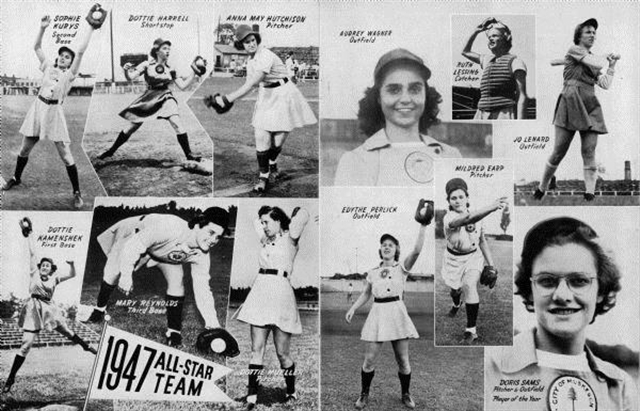
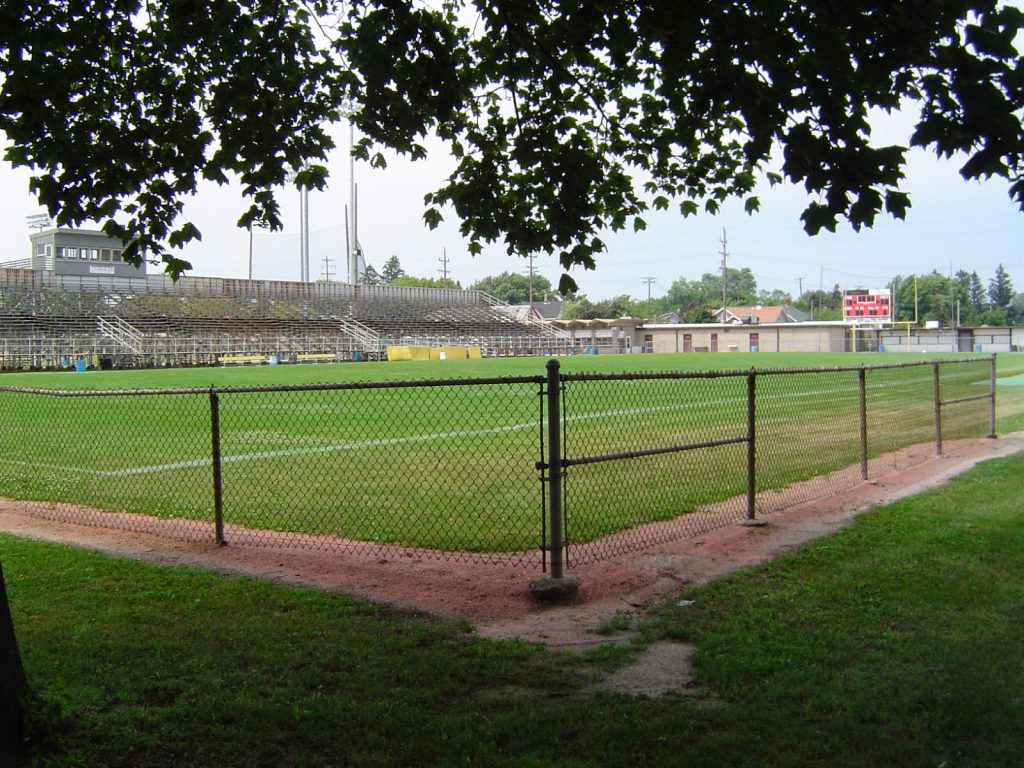
When not on the diamond, the Belles were often seen out on the town. Members of the Belles regularly helped with youth baseball programs in the area and inspired the creation of a girls’ baseball league similar to that of the Belles’ (that is, in its play style and rules), which in turn fostered further community development. The Belles also had an official “knot-hole gang”, which was an initiative used by Major League Baseball to bring more community kids and families to baseball games by offering them discounted family tickets. These knot-hole gangs can still be found in baseball today![v]
After their league championship in 1943, the Belles went on to win the 1946 league championship before relocating to Battle Creek, Michigan in 1950. The team folded due to financial troubles in 1953, a year before the AAGPBL disappeared entirely in 1954 because of waning interest. The Racine Belles was no second-rate baseball team. They represented an era of change and shifting gender norms as the impact of World War II was felt across the country. From the large crowds they drew to their contributions to the community, the Racine Belles left a lasting mark on the city of Racine.[vi]
Written by Cole Roecker, August 2020.
FOOTNOTES
[i] AAGPBL Players Association Staff. “AAGPBL League History.” AAGPBL Players Association, 2014. https://www.aagpbl.org/history/league-history
[ii] Racine Belles Records, 1946-1949. Wisconsin Historical Society; online facsimile at http://www.wisconsinhistory.org/turningpoints/search.asp?id=1141
[iii] Pitrof, Marge. “Remembering Racine Belles of the All-American Professional Baseball League.” WUWM, June 30, 2017. https://www.wuwm.com/post/remembering-racine-belles-all-american-girls-professional-baseball-league#stream/0; Drane, Deon. “Black History in Racine.” Racine Journal Times, April 9, 1995. https://journaltimes.com/news/local/black-history-in-racine/article_32df8f28-6919-59ba-a31a-9ab77787cf96.html
[iv] Brehm, Keith. “Racine Belles Home Attendance Puts Guarantors in the Clear.” Racine Journal Times, August 23, 1943.
[v] Racine Belles Records, 1946-1949. Wisconsin Historical Society; online facsimile at http://www.wisconsinhistory.org/turningpoints/search.asp?id=1141
[vi] AAGPBL Players Association Staff. “AAGPBL Teams: Racine Belles.” AAGPBL Players Association, 2014. https://www.aagpbl.org/teams/racine-belles
